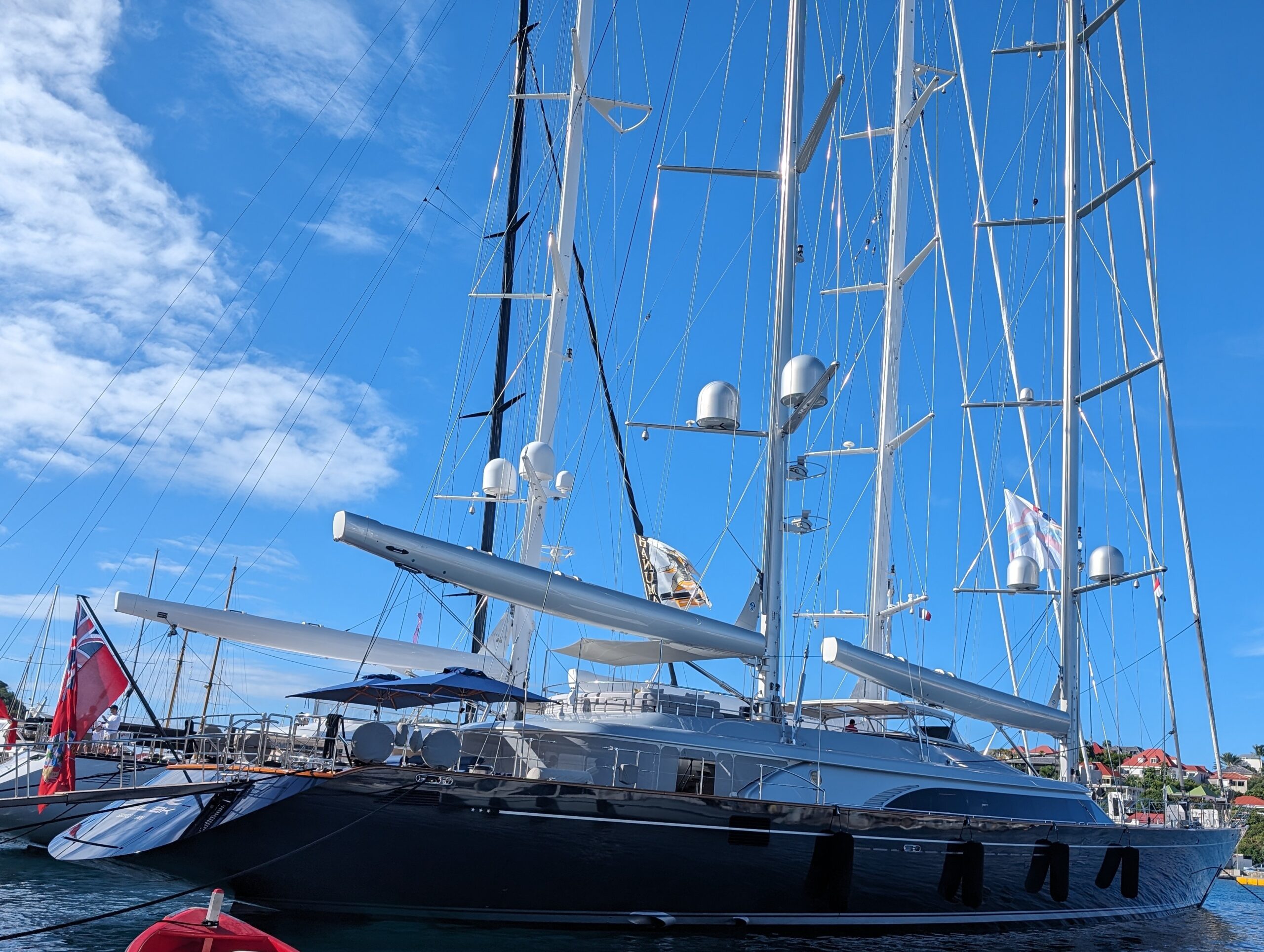The furler was slowly unwinding the genoa as the 500-ton boat wallowed struggled to accelerate out of the tack. A passing squall was rapidly accelerating an equally large starboard-tacked boat towards us, and it became apparent that we were not going to make the cross. Time seemed to stand still as our tactician needed to make a split-second decision.
This was my first foray into the world of super yacht sailing, trimming sails on a 56m (183 foot) Perini Navi for the St. Barths Bucket. While the controls, rules, and movement of the boat were different than what most of us were used to, there were many lessons to take home and use to sail on more typically sized racing boats.

Plan ahead
When the boat weighs 500 tons and takes six minutes plus to tack or gybe, there is very little room to make rash decisions. The races we were running would be described as tours of St. Barts, with a full mix of upwind, downwind, and reaching winds. Before each race, we did a complete run through of every leg, discussed what the angles were, and even a plan for how many tacks and gybes we would be doing. Completing one more maneuver than an opponent meant minutes lost on the racecourse. The ‘all hands on deck’ meeting included everyone from the bow team to the stewards, and was the perfect time to plan when lunch would be served! On a smaller boat, there is more freedom to ad lib but having a general plan of how each leg will go so as to save you time and maneuvers.
Know your polars
For those of us who grew up sailing small boats, we used the calibrated instruments of our butts on the sail and the wind on our faces. As the boats get bigger, the feedback becomes less apparent and we are forced to rely more on the electronics. Our tactician and Evolution’s founder, Rodney Keenan, drilled the polars for the boat into us. We started with the numbers from the ORC certificate and worked to fine tune the speed and angles as we sailed the boat. Eventually, we had target speeds and wind angles upwind and down, acceleration angles and speed targets out of maneuvers, and minimum speed targets through tacks.
Learning to not only use the polars that are supplied for the boat, but to combine the data with real world experience helps with finding the last couple of percent on the racecourse. For example, our upwind polars were around 10 knots for the majority of the event, but we found, with leeway and creating a wider groove, that going a touch faster and a degree or two lower was the better mode.
Using the polars most effectively keeps you from falling into a false complacency. Having a number to hit or beat will prevent long periods of underperformance that may feel right but may not be hitting the mark. The polars will shorten the learning curve for sailing the right angles when going upwind and down. With the wide variation of boats out there, the right angle on one boat could be 10 degrees off from another!
Planning ahead wins races
The winning decision for the Bucket may not have been our close cross or a windshift but were actually decisions made months before the event. Our team sat down and went through the configurations we sailed with and decided, among other things, to leave the mizzen staysail ashore. While it didn’t seem like much, the sail’s few seconds per mile cost under ORC turned out to be the winning margin for the regatta. For only a few credits spent on ORC, we were able to get it right.
As rating rules become more transparent and consistent, it pays to take the time to plan out the perfect configuration for the race. Deciding which sails to bring on the boat, crew weight, or changes to rig configurations can have minutes or even hours of impact on the handicap over a race. Rating systems like ORC allow you to run different configurations easily and cheaply, while others, such as PHRF, will have more fixed penalties and credits for changes. If you’re ever lost, most sailmakers have experience with the rating rules to point you in the right direction.

Oh, and our close cross? We made a split-second decision and went for the safety of a hard duck. I dumped the mainsails and the genoa bit to pull the bow down and safety pass behind our sistership. The acceleration helped slingshot us back into the lead and the first of three bullets for a perfect weekend. The wildly different world of super yacht sailing made me rethink how we sail other boats, and hopefully it will help you as well.


